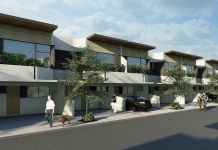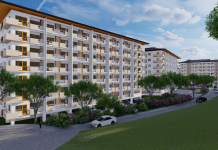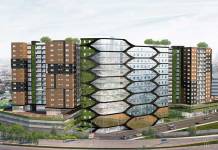
Asia Pacific’s real estate transaction volumes during the first quarter of 2016 fell 5 percent from the same period a year earlier to US$ 23.7 billion, as weakness in Japan outweighed gains in Hong Kong, Australia and South Korea.
Volumes in Japan, the region’s biggest market, dropped 26 percent year-on-year but climbed 65 percent quarter-on-quarter to US$ 9.6 billion, according to real estate firm JLL’s latest global capital flows data.
“The BOJ’s (Bank of Japan) decision to move to negative interest rate policy earlier this year caused some uncertainty,” explained Megan Walters, Head of Asia Pacific Capital Markets research.
“A number of deals were pulled from the market to be refinanced.”
Japan’s interest rates may move lower
In February, the BOJ surprised global markets by adopting a negative interest rate on excess reserves.
“With little evidence of an improving economic outlook and the Yen climbing to its strongest level against the US dollar since 2014, the BOJ may potentially push interest rates further into negative territory,” said Walters.
“Negative interest rates will continue to attract more equity investment as investors seek yielding assets,” said Stuart Crow, Head of Asia Pacific Capital Markets.
“Fund terminations expected in 2016 will support transaction volumes, although deal flow in certain markets remains limited.”
Cross-border transaction volumes in Japan totalled US$ 3.2 billion in the quarter.
Australia, Hong Kong volumes rise
Elsewhere, Australia transaction volumes climbed 32 percent on the same period last year based on USD and 44 percent in AUD$. Foreign buyers accounted for around two-fifths of total transactions.
In China, volumes were 10 percent ahead of the same period last year despite the volatility seen in the country’s financial markets at the start of 2016.
Hong Kong had a couple of big asset sales pushed volumes up 186 percent. China Everbright’s US$ 1.3 billion purchase of Dah Sing Financial and LINK REIT’s US$ 760 million acquisition from the Hong Kong Government supported the deal flow.
“Investment appetite by Chinese investors showed no signs of abating after setting record transaction pricing in 2015,” said Crow.
In South Korea volumes climbed 207 percent. The office sector saw strong activity, led by Alpha Investment Partners’ acquisition of a Grade ‘A’ building (US$ 320 million) from two strata-title owners.
“The pricing gap between buyers and sellers narrowed, which helped to boost volumes.
Moving ahead JLL expects that domestic investors to remain active purchasers and deal volumes to climb as landlords look to solidify profits given high vacancy rate and as the rate of capital value growth slows,” added Walters.
Subdued investment activity for Thailand in Q1
Despite strong investor interest, Thailand had no direct commercial property investments recorded during the first quarter of 2016.
Suphin Mechuchep, Managing Director of JLL in Thailand, said: “Both domestic and foreign investors have continued to show strong interest in acquiring good-quality commercial properties in Thailand, particularly office buildings in Bangkok. However, the country saw no direct real estate investment activity in the first quarter of this year due to the lack of assets put up for sale.”
The most significant investment transaction recorded in the first quarter was the acquisition of a six-rai site on Silom Road in Bangkok by NYE Estate and Minor International Group on a 50-year lease term.
The transaction was concluded by JLL on behalf of the landlord. However, it was not included in JLL’s Global Capital Flows, which excludes land transactions.
“NYE Estate and Minor International Group acquired only the land while the existing three office buildings on the site will be removed to make room for a new commercial development project,” Suphin explained.
Intra-regional flows jump
In light of global economic uncertainty, Asian investors preferred markets closer to home. This was evidenced by the jump in capital flows between countries within the region.
Intra-regional buyer transaction volume rose to US$ 4 billion in the first three months of this year from US$ 1.1 billion the same period a year ago. This compares with inter-regional (international) purchaser capital flow, which fell by 74 percent to US$ 1.2 billion from US$ 4.7 billion.
“The fact that more Asian investors have chosen to put their money within the region is indicative of a shift in global investment trends as the region moves towards a more aggressive expansionary monetary policy mode,” said Walters.
“Going forward, we could see more Asian capital staying within the region as a divide in global monetary policy continues with the US moving on to a restrictive policy approach.”




















